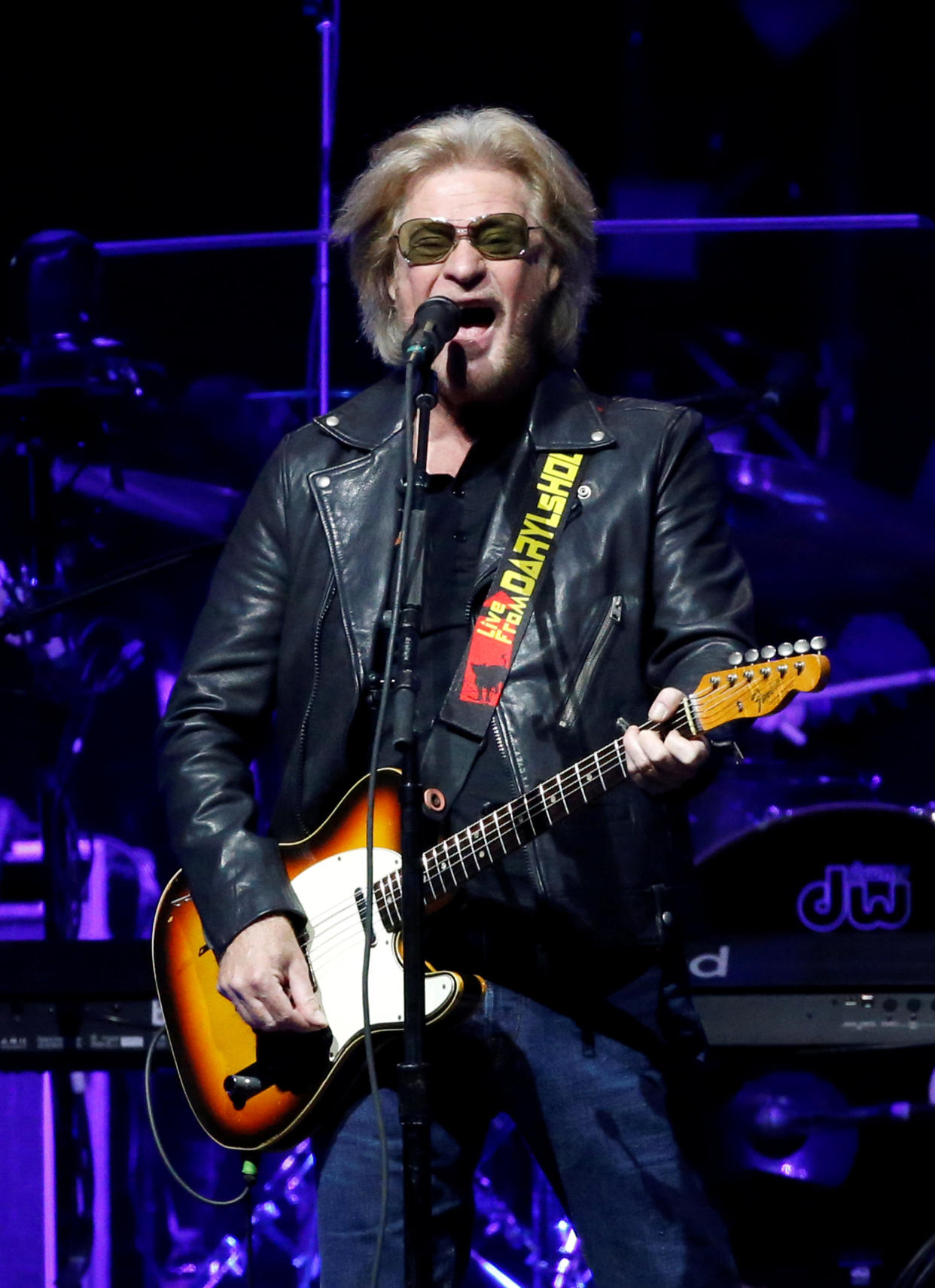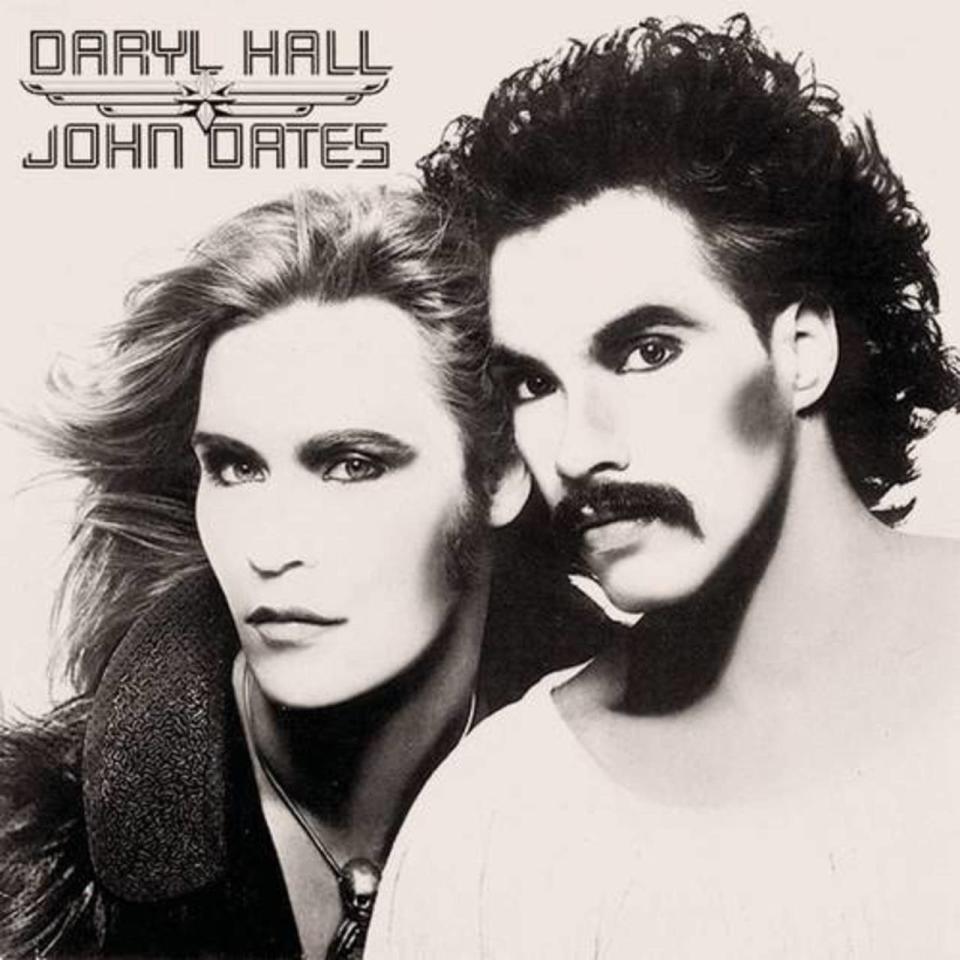Daryl Hall talks career resurgence: 'The media were a bunch of f***ing a**holes'

It’s hard to believe, but there was a time when Daryl Hall & John Oates were considered uncool. Sure, they were one of the biggest acts of the ’70s and ’80s (and the third-best-selling musical duo of all time), with six No. 1 hits and 40 million records sold, but by the early 2000s, the only socially acceptable way to be a Hall & Oates fan was to be an ironic fan. By then, a new surge of ’80s nostalgia had led to increased public appreciation for H&O’s low-budget early-MTV videos, Crisco-slick production, and even Oates’s since-shaved handlebar mustache … but it took a bit longer for everyone to fully recognize the soulful twosome’s serious songwriting talents.
Now, Hall & Oates’s adult-contemporary staples like “Sara Smile,” “She’s Gone,” and “Rich Girl,” and blue-eyed Philly soul jams like “One on One” and “Maneater,” are being embraced by new audiences. Last year, H&O played arenas on a co-headlining tour with Tears for Fears; this year, they’ll hit the road with Train. And now it’s fashionable for young bands to namecheck Hall and Oates. Daft Punk, Phoenix, Zoot Woman, and Chromeo have clearly been influenced by the H&O songbook, and “I Can’t Go for That” has been sampled in about 11,000 hip-hop songs, as well as by the xx. (“I come from Philadelphia; my music is soul music. In its essence, it is soul melodies and soul chords. The rhythms, the way it swings and all that, I think that lends itself, especially in R&B songs, to people sampling it,” says Hall.)
Additionally, “You Make My Dreams” got a new lease on life from 500 Days of Summer (“I thought, ‘Wow, they used the whole song. It was like having a Daryl video in the middle of the movie!”); Gym Class Heroes named one trek the “Daryl Hall for President ’07 Tour” (perhaps Hall will consider a bid in 2020?) and released a Hall & Oates mashup album; and the Bird and the Bee, an indie-pop group featuring superproducer Greg Kurstin, recorded an entire album of Hall & Oates covers. And finally, Hall has recruited everyone from KT Tunstall, Grace Potter, and Fitz and the Tantrums to Todd Rundgren and the late Sharon Jones for his wonderful and undeniably hip variety show, Live From Daryl’s House.
Speaking to Yahoo Entertainment, Hall confesses that one of the reasons why he started Live From Daryl’s House was he “got tired of being misunderstood.” He was very aware of his unfair bad rap, and he blames the vicious music press that for many years, bizarrely, never gave Hall & Oates their due.
“The media were a bunch of f***ing a**holes, as far as I’m concerned,” Hall says plainly. “They always like a scapegoat. It’s part of the journalistic attitude. And they decided, way back in their infinite cynicism and ignorance, that me and John were going to be their goats. [Rolling Stone’s] Jann Wenner has a lot to do with it. It’s a mindset that they basically created, and people fell for it. It was unbelievably angering and disappointing to me. But it happened, and I turned it around, and there it is.”
Hall felt the tides turn “exactly when I started doing my TV show. When I started doing Live From Daryl’s House, which was about 11 years ago, there was this sea change. I think people saw who I really was. I don’t think people understood what I was about, and so, in a vacuum, they made up some alternative to what my personality is, what my motivations are, and the way I am as a person. As soon as they saw me in my house, being a real person, and dealing with the music in a real way, things changed. I think it’s a great thing. I feel proud of it — vindicated.”
So, Hall & Oates went from scapegoat to G.O.A.T., and they were finally inducted into the Rock and Roll Hall of Fame in 2014 — though “That’s not the kind of vindication I give a s*** about,” Hall notes. He still doesn’t really feel like he belongs to the boomer era that the hall of fame mainly represents — which may explain why his music connects so well with younger fans.
“It’s a different world now. The press is a different generation of press. My generation was that whole baby boomer crap, you know, which I never felt comfortable with,” says Hall. “I didn’t even feel comfortable with it when I was 5 years old! And I still don’t feel comfortable with it. I don’t like those people. I don’t like people my own age, for the most part. … I’m much more attuned to Gen X and younger, I feel more affinity. The way my brain works is more like that. So, you know, I think that that was part of the problem right there too. I never fit in with that generation.”
You’d think that music snobs of older generations would’ve become aware, decades ago, of Hall & Oates’s hipness, when the duo opened for none other than David Bowie on the 1972 Ziggy Stardust U.S. tour. “It was phenomenal. I can’t say it didn’t change me. It did,” Hall recalls. “We opened for him the first time in Memphis. It was pretty much the first [major] tour that he did in America. I was blown away. I couldn’t believe it. Stylistically, and even musically, he was so unique at that time. It’s hard to put it in a modern context. It was like he literally came from Mars. But it wasn’t a clown show — it was really good, and very effective. He did something pretty amazing.”
Hall chuckles thinking about how the Bowie experience affected his fashion sense at the time. While Hall & Oates adopted a signature look of sharp-shouldered Miami Vice suit jackets in the 1980s, in the ’70s, Hall says, “For a while, I was wearing platform shoes that were about 6 inches high, which made me about 7 feet tall. Not the wisest fashion move I ever made!” Latter-day fans might be shocked now by the androgynous art for Hall & Oates’s 1975 self-titled fourth album, on which the pair sported feathered Farrah Fawcett hair and dramatic slashes of Jerry Hall face paint (“You look at that album and go, ‘What the hell were they thinking?’” laughs Hall), but that infamous cover was actually directly Bowie-inspired: Pierre LaRoche, the man who created Bowie’s iconic astral-sphere Ziggy makeup and Aladdin Sane lightning-bolt look, came up that album’s cover concept.
“We got into that whole glam rock-y thing, like everybody else did. That was the period at the time. Visually, yes, I made probably some of my biggest fashion mistakes back then,” says Hall. “But then you look at a lot of other people’s albums, and they were doing the same. Like, I’ll never forget Edgar Winter, of all people, in complete makeup and the whole thing. That’s just the way it was then. People did these crazy things. And it was free. The ’70s were interesting, man. It was a very free period in time.”

Looking back on Bowie’s death, as well as recent touring-retirement announcements by Elton John and Neil Diamond — who are from the same generation as 71-year-old Hall — Hall ponders how he’s able to stay out on the road, still performing at his peak. “Obviously, health is important, when you get up into the age that I’m entering into. Really, it’s mind over matter, the mind-body connection thing,” he says. “You can’t deny, like with poor Neil, what’s happened to him; if you get something [like Parkinson’s disease] that debilitates you, you have to stop sometimes. But barring that, it is actually energizing to [perform]. And I’ve seen many examples of that with people in their 80s, or even Tony Bennett, who’s in his 90s. Those are actually their most energized and recharged moments, when they’re in front of people, and that really does help certain people to maintain their inner core of energy. Age really doesn’t have anything to do with it. It’s attitude. That’s really the bottom line.”
Hall also reflects on how he’s been able to maintain his vocal power over the years. “Using the voice is the best thing that I can do. It’s like any other muscle in your body: Use and exercise gives it strength,” he explains. “If you listen to my old records, my voice sounds very different then than it does now — it was a thinner, higher kind of voice. My voice has matured, and I actually like it better now, because it’s got more depth to it, which works better with the kind of soul mentality that I have. The timbre of my voice has gotten richer, so I’m happy with that. I’ve lost a couple notes in range, up top, but what I’ve gained is probably better than what I lost. And to me, it’s a vehicle that kind of supports what’s going on in my head at the moment. It still works for me.”
With the public’s passion for all things Hall & Oates now stronger than ever, fans have to wonder if the duo, besides playing their classic hits on the road, will ever record another album again. (The duo’s last studio album was 2003’s Do It for Love.) Hall teases that there will be “something new” on their upcoming tour with Train, but shrugs, “We’re not really into making albums, you know, together. We’re individuals. We share the stage. We love our music that we’ve done together in our career. But we have our own lives, and we have our own creative lives. John has a record coming out; I’m working on a solo record right now.”
Still, after all the career ups and downs that Daryl Hall & John Oates have endured since 1972’s Whole Oats, they are “bonded by our long relationship,” says Hall. “I’ve known John since he was 17, I believe. We’ve experienced 10 lifetimes already. A lot of water has gone under the bridge, and that shared experience, I believe, is what bonds us and makes it easy for us to communicate. I always say, it’s like a brother relationship.”
Daryl Hall & John Oates’s tour with Train kicks off May 1 in Sacramento, Calif. Get tickets here.
Follow Lyndsey on Facebook, Twitter, Instagram, Google+, Amazon, Tumblr, Spotify

